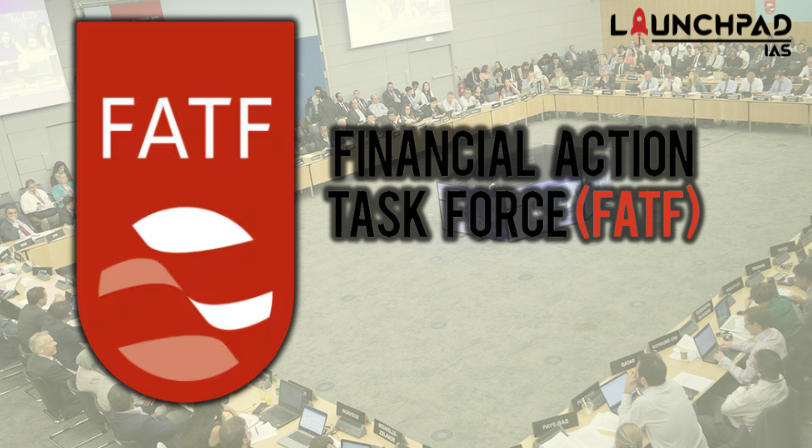About
Financial Action Task Force (FATF) is the global money laundering and terrorist financing watchdog set up in 1989 out of a G-7 meeting of developed nations in Paris.
Objective
- Initially, its objective was to examine and develop measures to combat money laundering.
- After the 9/11 attacks on the US, the FATF in 2001 expanded its mandate to incorporate efforts to combat terrorist financing.
- In April 2012, it added efforts to counter the financing of proliferation of Weapons of Mass Destruction (WMD).
FATF Recommendations
- In April 1990, less than one year after its creation, the FATF issued a report containing a set of Forty Recommendations intended to provide a comprehensive plan of action needed to fight against money laundering.
- In 2004, the FATF published a Ninth Special Recommendations, further strengthening the agreed international standards for combating money laundering and terrorist financing – the 40+9 Recommendations.
- In 2012, the FATF revised its recommendations and expanded them to deal with new threats such as the financing of the proliferation of WMD.
- Over 200 jurisdictions around the world have committed to the FATF Recommendations through the global network of nine FATF-Style Regional Bodies (FSRBs) and FATF memberships.
FATF Sessions
- The FATF Plenary is the decision-making body of the FATF.
- It meets three times per year.
Who are the Members and Observers of FATF?
Members
- As of today, it is a 39-member body representing most major financial centers in all parts of the globe.
- Out of 39 members, there are two regional organisations: the European Commission, and the Gulf Cooperation Council,
- Countries that are members of FATF include Argentina, Australia, Austria, Belgium, Brazil, Canada, China, Denmark, Finland, France, Germany, Greece, Hong Kong (China), Iceland, India, Ireland, Israel, Italy, Japan, Republic of Korea, Luxembourg, Malaysia, Mexico, Netherlands, New Zealand, Norway, Portugal, Russia, Saudi Arabia, Singapore, South Africa, Spain, Sweden, Switzerland, Türkiye, the UK, and the US.
India and FATF
- India joined with ‘observer’ status in 2006 and became a full member of the Financial Action Task Force FATF in 2010.
- India is also a member of its regional partners, the Asia Pacific Group (APG) and the Eurasian Group (EAG)
Observers
- Indonesia is the only observer country of FATF.
- Some important organizations that have observer status with the FATF include:
- Asian Development Bank (ADB)
- International Monetary Fund (IMF)
- International Organisation of Securities Commissions (IOSCO)
- Interpol
- Organization for Economic Co-operation and Development (OECD)
- United Nations Office on Drugs and Crime (UNODC)
- United Nations Counter-Terrorism Committee Executive Directorate (UNCTED)
- World Bank
- World Customs Organisation (WCO)
Who is the FATF President?
- The FATF President is a senior official appointed by the FATF Plenary from among its members.
- S/He convenes and chairs the meetings of the FATF Plenary and the Steering Group, and oversees the FATF Secretariat.
- S/He is the principal spokesperson for the FATF and represents the FATF externally.
- The term of the President begins on 1 July and ends on 30 June two years after assuming office.
What is the FATF Secretariat?
- The FATF Secretariat is located at the OECD headquarters in Paris.
- The Secretariat supports the substantive work of the FATF membership and global network.
- The funding for the FATF Secretariat and other services is provided by the FATF annual budget to which members contribute.
What are the Grey and Black Lists of the FATF?
- The FATF Plenary meets tri-annually – in February, June, and October, to take stock of “Mutual Evaluation Reports” (MERs) of the countries it reviews.
- If a country appears to have major deficiencies in its AML/CFT regime, it is put on a list of “jurisdictions under increased monitoring” – a “grey list” and if it fails to address FATF concerns, it is put on a “high-risk jurisdictions” list – “black list”.
- AML/CFT refers to “Anti-Money Laundering/Combating the Financing of Terrorism”.
- To be pulled out of the grey list, a country has to fulfill the tasks recommended by the FATF, for instance, confiscating properties of individuals associated with terrorist groups.
- If the FATF is satisfied with the progress, it removes the country from the list.
Grey List:
- The Grey List includes countries that are considered safe haven for supporting terror funding and money laundering.
- It serves as a warning that the country may enter the blacklist.
Black List:
- The Black List includes Non-Cooperative Countries or Territories (NCCTs) that support terror funding and money laundering activities.
- As of now, Iran, North Korea, and Myanmar are the three blacklisted countries.
Consequences of Being Enlisted in FATF Lists
The enlisted countries are subjected to:
- Economic sanctions from financial institutions affiliated with FATF (IMF, World Bank, ADB, etc.)
- Problems in getting loans from such financial institutions and countries
- Reductions in international trade
- International boycott
Issues Associated with FATF:
- The challenges associated with the adoption and implementation of FATF codes in member states include:
- Difficulty in domestic coordination
- Capacity constraints of countries
- Inadequate operational resources
- Assessment complexities in the implementation of FATF standards
- The challenges associated with the implementation of new technologies for AML/CFT include:
- Poor understanding of ML/TF (Money Laundering /Terror Funding) threats and risks.
- Inability to adequately identify, assess, and mitigate ML/FT risks.
- Traditional risk assessment tools do not allow data to be analyzed at a large scale, limiting the potential for correlations and analysis to generate a more fine-grained picture of the risks.
- The other factors that encourage ML/TF include:
- Lack of coordination between international organizations and the huge burden of legislation created
- Weaknesses in national regulatory schemes
- Informal transfer and movements of assets across national boundaries
- High costs of implementing the risk approach for private non-state actors (financial and non-financial institutions)


